The story of the most important photo of the 20th century
On 8 June 1972, Nick Ut captured an image of a young girl running away from a napalm attack in Vietnam. Today it is considered one of the most famous photos in the world. James Rampton tells its story

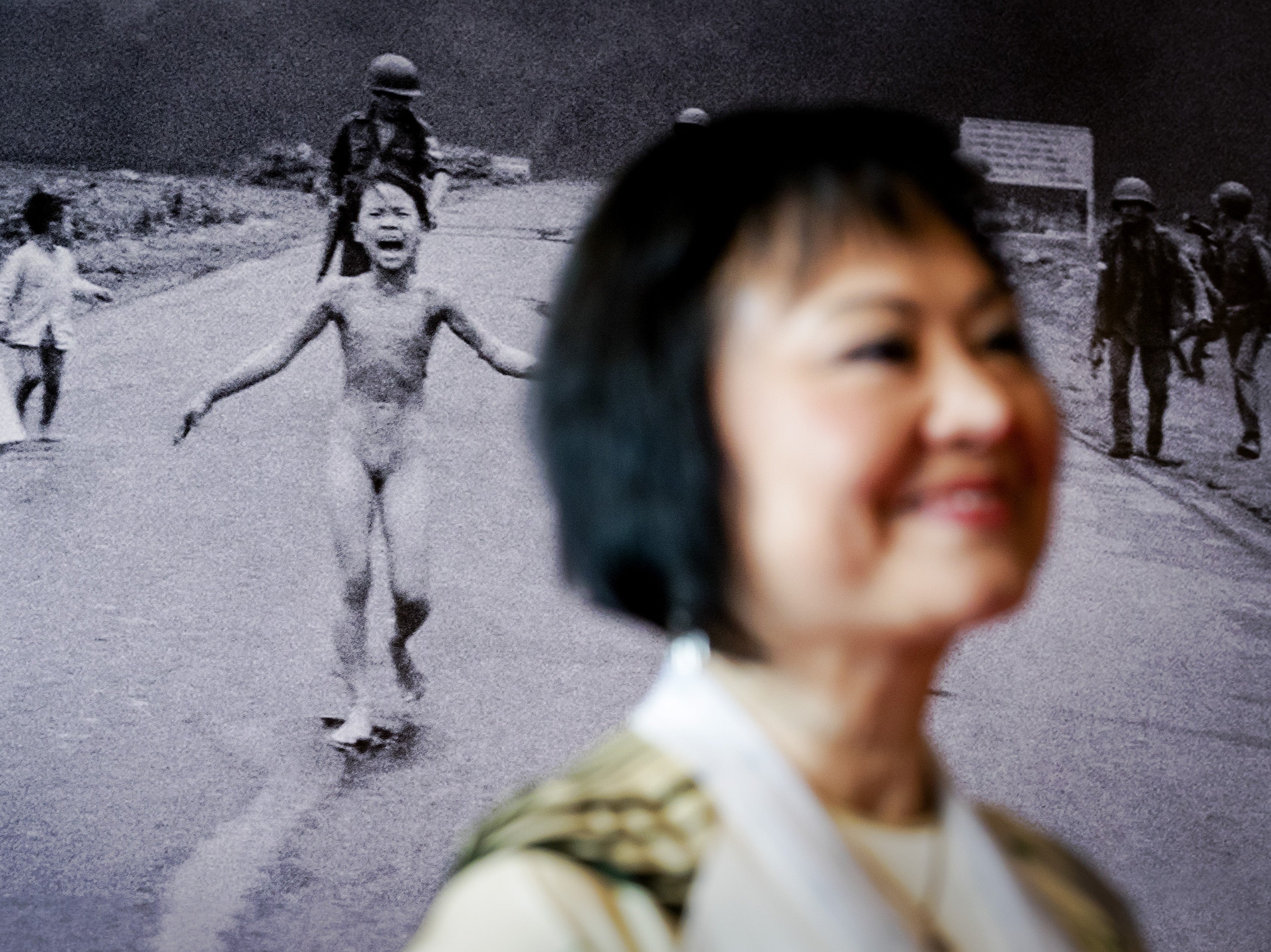
The photographer Nick Ut and his lifelong friend Kim Phuc met the late Queen Elizabeth II in 2020 and, he tells me, they had a very good, in-depth conversation for a full 10 minutes.
Why were they granted such privileged access by our late monarch? Because 50 years ago Ut took a photo of Phuc that has become perhaps the most famous picture of the 20th century.
There are surely very few people on the planet who have not seen the Vietnamese-American photographer’s timeless picture entitled The Terror of War or Napalm Girl.
The globally renowned image depicts a group of five children screaming in pain as they run down Route 1 from a pagoda in Trang Bang, Vietnam. They have been mistakenly bombed with napalm by US-backed South Vietnamese forces who believed the pagoda was a Viet Cong hideout.
In the centre of the picture is an image from which it is impossible to avert your gaze. Nine-year-old Phuc is wailing with shock as she flees the bomb site. All her clothes have been burned off by the napalm.
The image bears out photographer Irving Penn’s celebrated dictum that “a good photograph is one that communicates a fact, touches the heart and leaves the viewer a changed person for having seen it.” No one is unchanged after seeing The Terror of War.
In the blink of an eye, the then 21-year-old Ut caught that moment for all time. In that instant, he snapped a black and white photo that transformed his and Phuc’s lives – and altered the course of history.
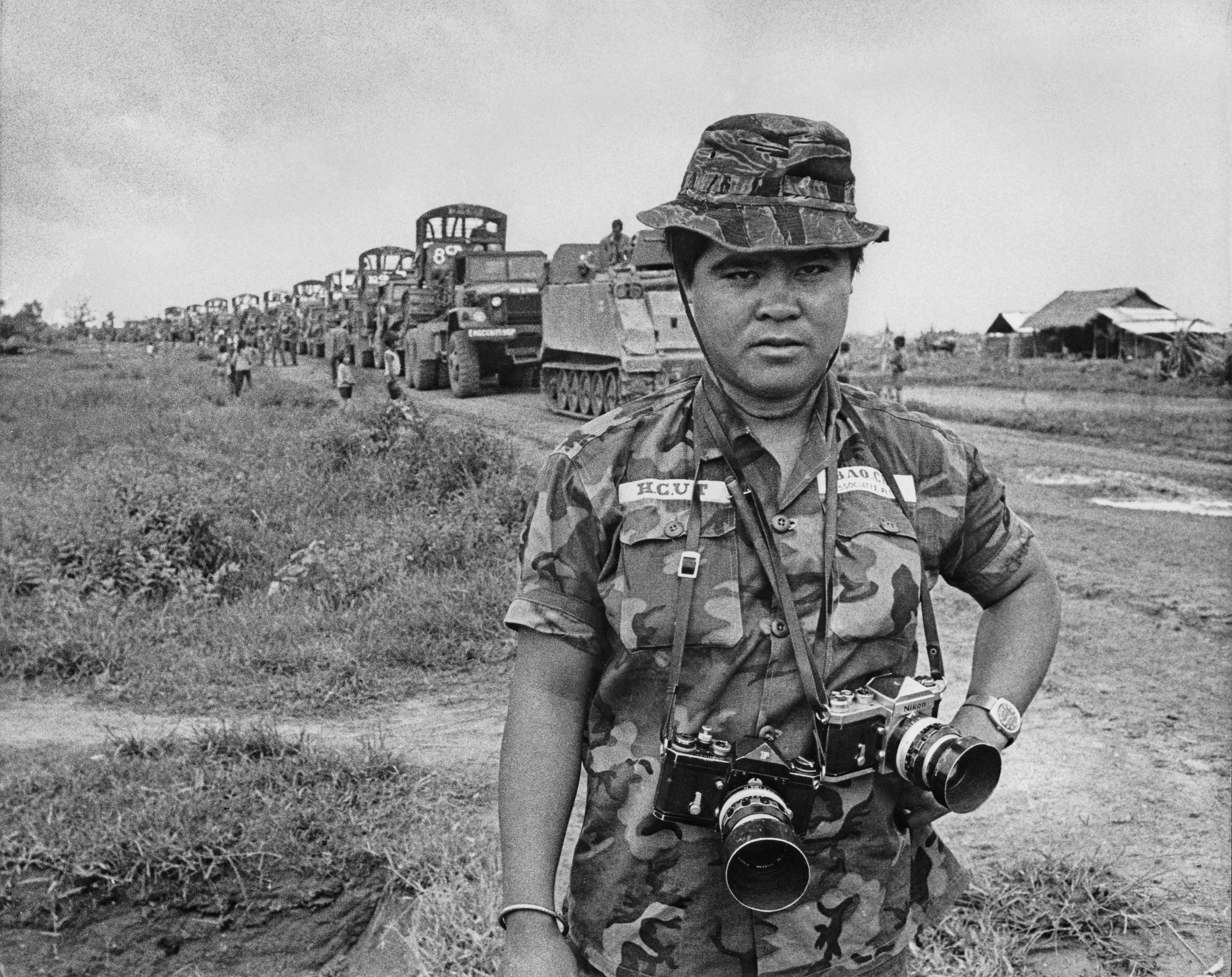
The image is widely credited with helping to hasten the end of the Vietnam war. Just six months later, with American domestic protests against the conflict growing ever louder, the US agreed to withdraw all troops as part of the Paris Peace Accords.
Peter Arnett, the Pulitzer Prize-winning journalist who worked alongside Ut in Vietnam for the Associated Press, and saw the picture as soon as the photographer hurried to their Saigon office with it, assesses just how influential The Terror of War was in bringing the conflict to a close.
“I looked at the picture and instantly knew that this was explosive material,” he says. “It was a superbly photographed picture. It told the whole story. That picture, as much as any photo, helped usher in the end of the war six months later.”
David Burnett, a Time Life photographer who was also on the road from Trang Bang on that fateful day, 8 June 1972, summarises the global splash Ut’s picture made: “There was this one moment where Nick was in the right place, and the world was wrapped around him and his camera.”
He is such an important part of their war story because they all do truly attribute the end of the war to him. For them, the end of the war pivots around Ut’s photograph
Now the lens is turned on 71-year-old Ut. His extraordinary life story is told in From Hell to Hollywood, a gripping new PBS America documentary.
It starts with him joining AP at the age of just 16. He was determined to follow in the footsteps of Huynh Thanh My, the older brother he idolised and another AP war photographer, after Thanh My was killed during in 1965. Ut was himself injured three times during the conflict, sustaining wounds to his knee, arm, and stomach.
Talking to me from his home in Los Angeles, Ut says he is reminded almost daily of the historic significance of The Terror of War. “For over 50 years now, I’ve met so many American veterans who tell me, ‘Nicky, your picture ended the war. We came home because of your picture. I’m so lucky. I never died in Vietnam’.”
“The Vietnam veterans who live here in Southern California look at Nick like he is a rock star,” says Scott Templeton, the executive producer of From Hell to Hollywood, sitting next to Ut. “He is such an important part of their war story because they all do truly attribute the end of the war to him. For them, the end of the war pivots around Ut’s photograph.
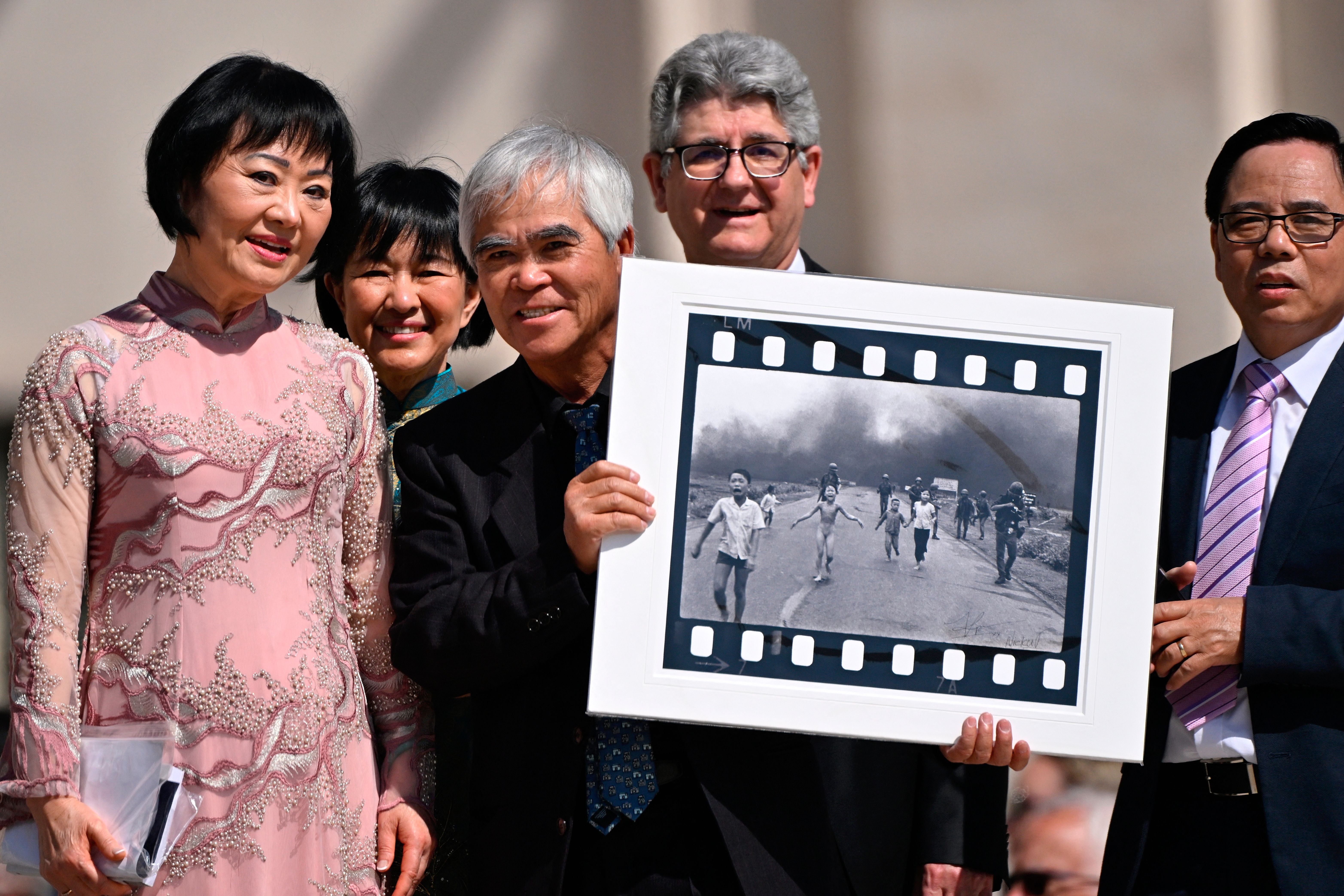
“The Terror of War solidified the opposition to the war. It put the nail in the coffin here in the States. That image really drove the message home to the people in the US that this is a terrible conflict, and it can’t end too soon.”
The astounding story of Ut and Phuc did not conclude with the photograph, though. Just after he had taken it, she ran past him shouting, “Too hot, too hot” as the napalm scorched the skin off her back and arm. Immediately grasping this was a life-or-death situation, Ut quickly poured water over Phuc’s wounds before she passed out.
Realising he didn’t have a moment to lose, he carried her and the other stricken children into his van and rushed them to the nearest hospital at Cu Chi.
There, a nurse informed Ut that they didn’t have enough medicine to treat the children and that he should take them to the Saigon children’s hospital several hours away. Ut saw at once that that would be a death sentence for the children.
Incensed, he showed the nurse his press pass and said: “If these children die, that picture is on the front page tomorrow.” They were all admitted on the spot – and their lives were saved.
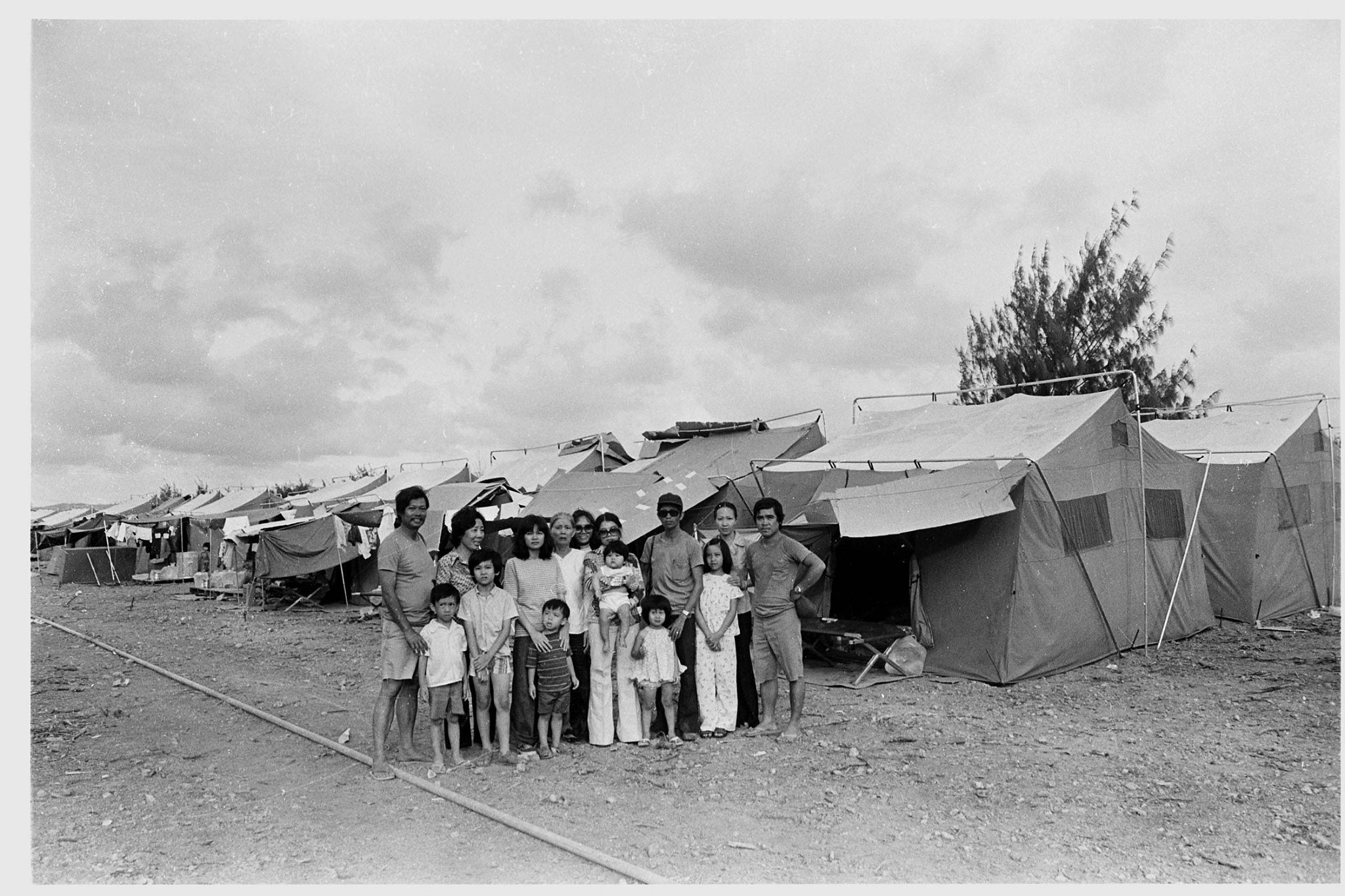
“He was Vietnamese, he could speak directly to the family,” says Templeton underscoring the vital role Ut played in rescuing the children. “When he drove the kids to the hospital, he would not take no for an answer. He knew that if he didn’t speak up, those kids were not going to survive.”
The executive producer adds that Ut’s heroism tells a wider story about humanity. “It shows that you can step out and transcend these horrible situations. You can choose to do the right thing and help your fellow human.”
Burnett echoes the fact that Ut’s courageous actions ensured the children lived. “The most interesting thing about this picture and the life of this picture is that Kim probably wouldn’t be alive today if he hadn’t shot it.”
In a heart-warming coda to an otherwise bleak story, Ut and Phuc have become close friends. Now both living in North America with spouses and children, they meet often and regard each other as family. He accompanies her to all the surgeries her wounds continue to require.
Phuc, who is a UN goodwill ambassador, calls him “Uncle Ut.” In a few weeks, for the first time, they will return together to the exact spot on Route 1 where the photo that united them forever was taken.
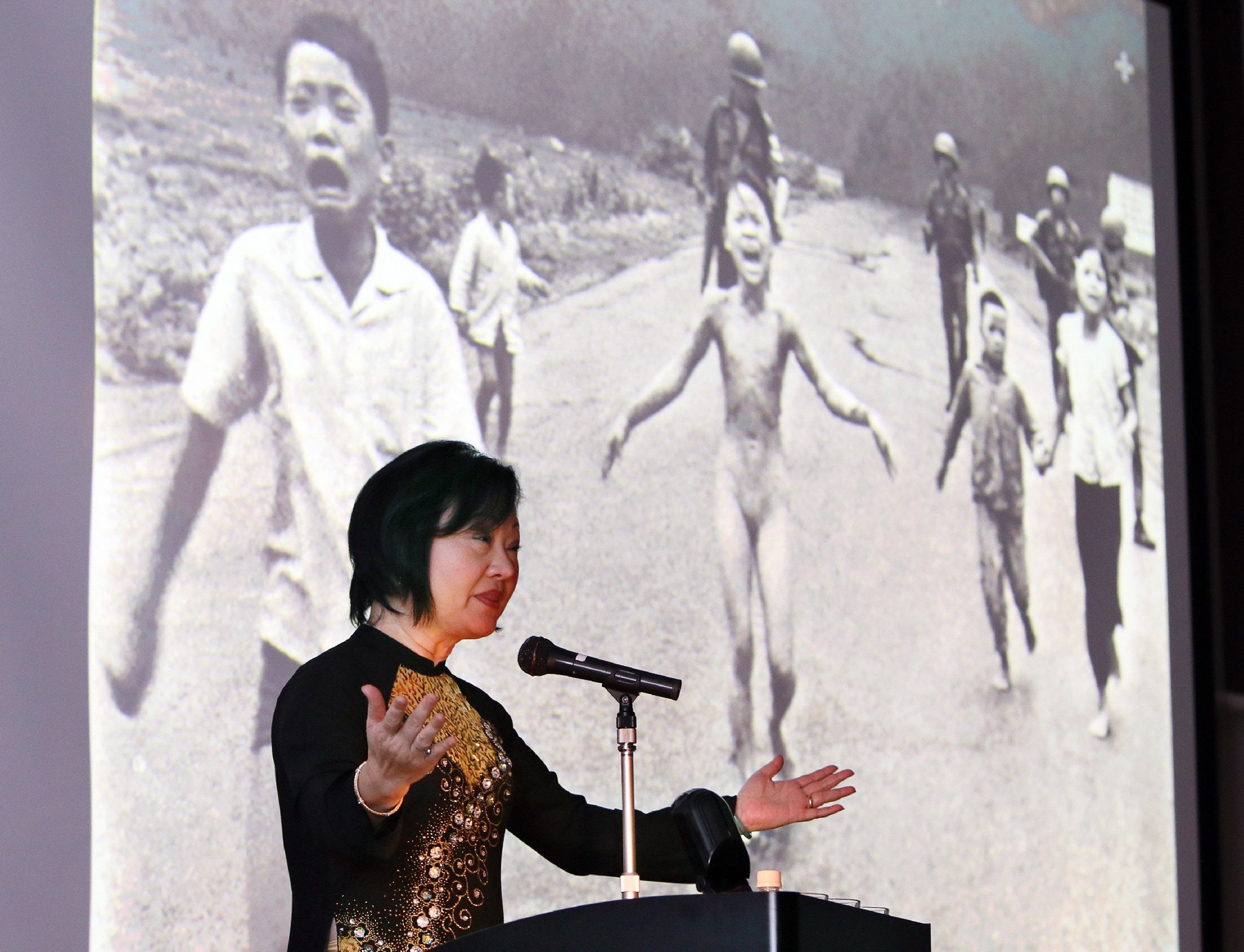
It is sobering to think, however, that this feted picture almost never saw the light of day. Ut, who won a Pulitzer Prize for the photo and has been recognised for it by figures as diverse as the Pope and President Trump, dashed from Cu Chi hospital back to Saigon to show it to his boss at AP, Horst Fass.
Jackson Ishizaki, another AP photographer who was present, exclaimed to Fass: “They’re incredible pictures, but we can’t use this stuff. There are naked children in them.” At the time AP never distributed pictures containing full-frontal nudity.
“There began a 30-minute debate about whether we should even send the picture to New York,” Arnett recalls. “I didn’t think there was any doubt that we’d send it. There were those who said: ‘Well, it may be objectionable’. I didn’t feel that way at all. War is objectionable. Napalm is objectionable.”
Fass did indeed override any objections. He sent the image straight to AP’s New York headquarters and within 12 hours it was on the front page of virtually every newspaper in the world.
There was a further twist. On seeing the picture, President Nixon realised at once how incendiary it was. In a tape recording of his discussions with his chief of staff HR Haldeman, he claimed the photo was “fixed.”
Phuc was deeply offended by this reaction. “President Nixon said it was a fix. I couldn’t believe it. I can’t change their opinion, but I’m that little girl. All my scars are still here.”
A video is a bunch of frames strung together, so perhaps you cannot dwell on the actual moment of impact, whereas a properly shot journalistic photograph captures a moment
Ut was just as irate about Nixon questioning the veracity of his photo. “Even though it has become one of the most memorable images of the 20th century, President Nixon doubted the authenticity of my photograph when he saw it in the papers.
“The picture for me, and unquestionably for many others, could not have been more real. The photo was as authentic as the Vietnam war itself. The horror of the Vietnam war recorded by me did not have to be fixed. That terrified little girl is still alive today and has become an eloquent testimony to the authenticity of that photo. That moment will be one Kim and I will never forget. It has ultimately changed both our lives.”
Many see Nixon’s response as the beginning of the toxic trend of politicians labelling stories they don’t like as “fake news” – a tendency that reached its zenith with President Trump.
“Nixon and his aides were wondering if somebody would go so far as to fabricate a photograph to try and make the war look even more tragic than it was,” Templeton says.
“The opponents of the Vietnam war clearly didn’t need to do that. But it was a comment on that time that Nixon would think that his opponents would actually go to that degree to push their side of a story. That was very telling. I do think it was the foundation of the fake news we have today where one person can take that narrative and push it in their favour.”
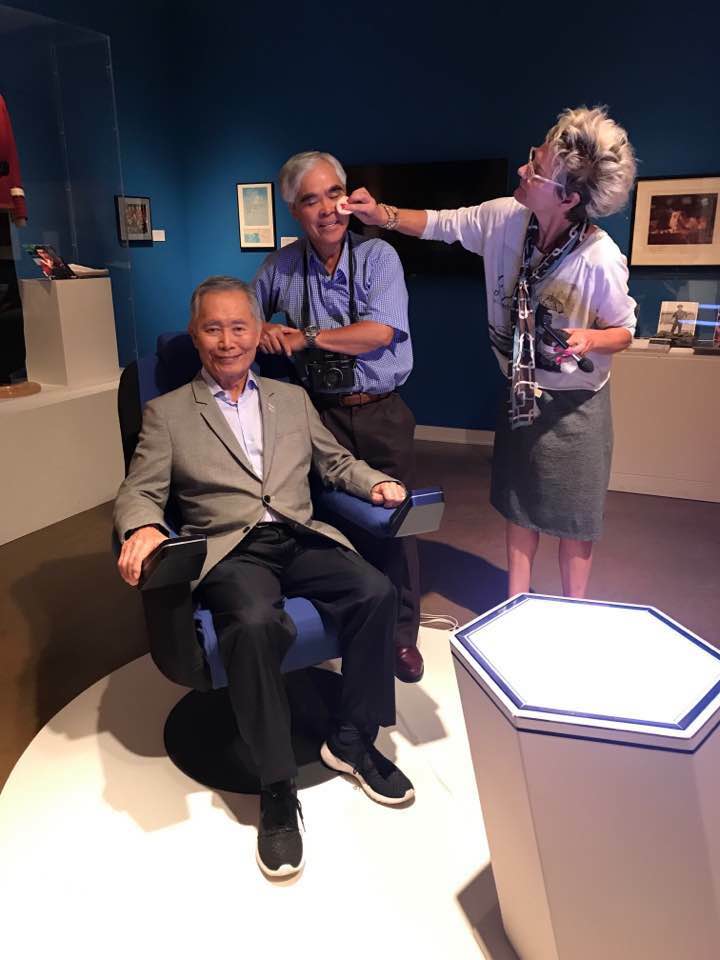
Nixon was right to be concerned about the potential effect of the picture. The moment it was published, it caused an instant, international sensation. George Takei, the Star Trek actor and peace activist, recollects: “That little girl completely naked was something that really galvanised the peace movement here in the US. It made a profound impact.”
Why, then, amongst the millions of photos taken in the last half-century, has this single image retained its unique capacity to compel? In its raw power, it is a picture that epitomises the sheer horror of war. This single image conveys the atrocity of human conflict with a force that mere words could never hope to match. It contains the capacity to profoundly move people and shift public opinion. And that is why its potency and its fame endure to this day.
Templeton contemplates the enduring strength of The Terror of War. “It depicts war and violence against children, and the fact that Kim’s clothes are burned off is a big part of it.
“It has also kept in the news in some interesting ways. There was a whole controversy recently over it being censored on Facebook for being child pornography. People like the premier of Norway became involved in getting Facebook to change its policies on that.”
A single image also possesses an unalloyed power that may be dissipated by moving pictures. Jon Kroll, the director of From Hell to Hollywood, observes: “A single image forces you to look. You don’t even have to click ‘play’. It’s in your face. It’s unavoidable. You can’t un-see it.
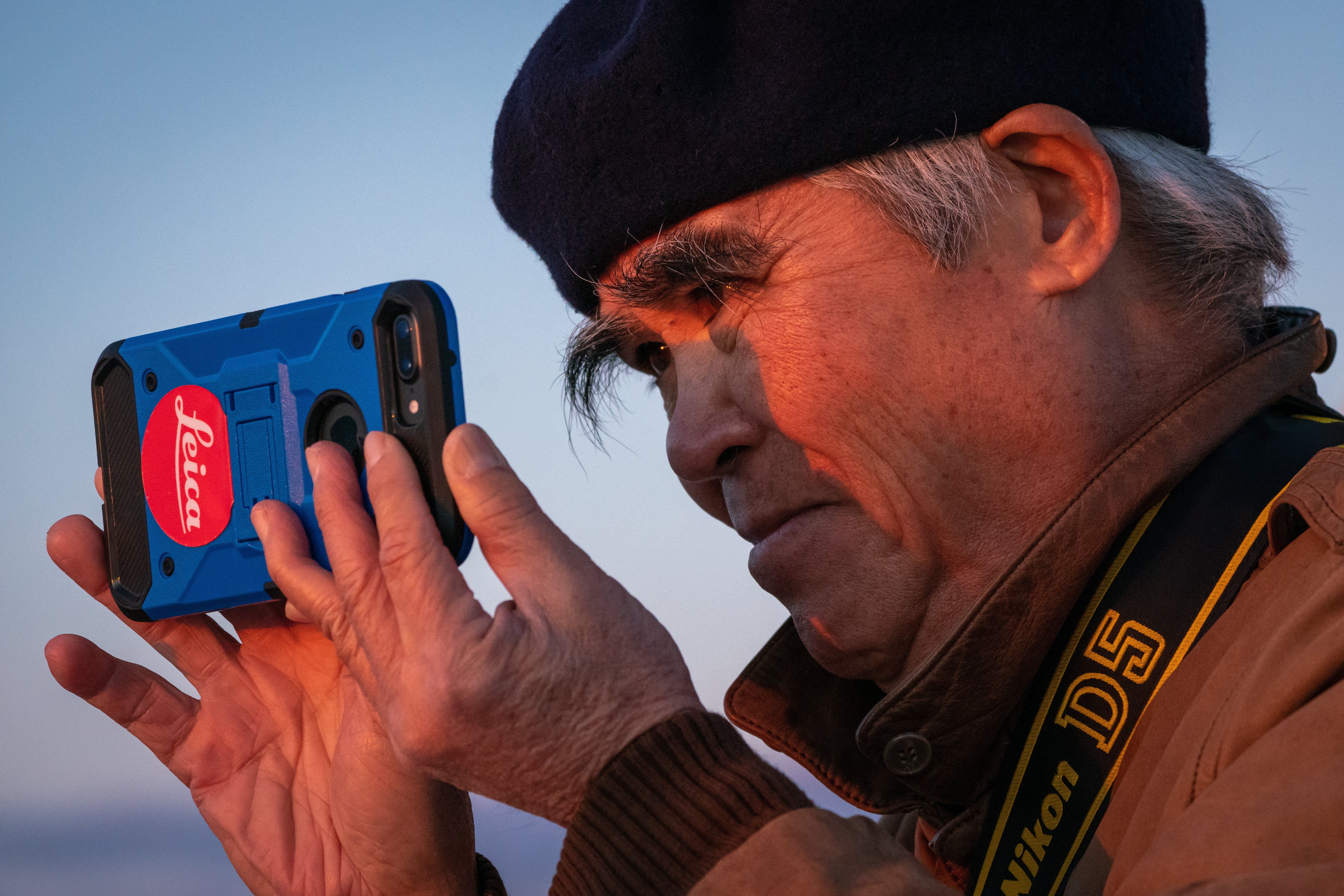
“A video is a bunch of frames strung together, so perhaps you cannot dwell on the actual moment of impact, whereas a properly shot journalistic photograph captures a moment and keeps it frozen in time in a way that video cannot.”
“Nowadays, photographs are everywhere,” says Templeton. “But even today, The Terror of War has a huge impact. It shows that, even in this age of being overwhelmed by images, a single image can still have that kind of force. It stands out as being something that is worthy of the kind of scrutiny that we subject it to.”
It also helps that The Terror of War is in black and white. “Many of the best news photographs are black and white,” Templeton believes. “The absence of colour keeps you from being overwhelmed by the visual aspect of it. It allows you to take that extra little beat, to explore that moment in time and say, ‘oh, this is a horrible thing that happened,’ or, ‘this is an important moment.’”
After the fall of Saigon, AP warned Ut that he would be jailed by the new government if he stayed in Vietnam. He was offered the choice of a posting in Washington or Los Angeles. Ut’s reaction was instantaneous. “My God, I want to go to Hollywood!”
In LA, he carved out a very successful – and very different – second career as a celebrity photographer. He covered the trials of OJ Simpson, Michael Jackson, Phil Spector, the Manson Family, Roman Polanski, Paris Hilton and Charlie Sheen.
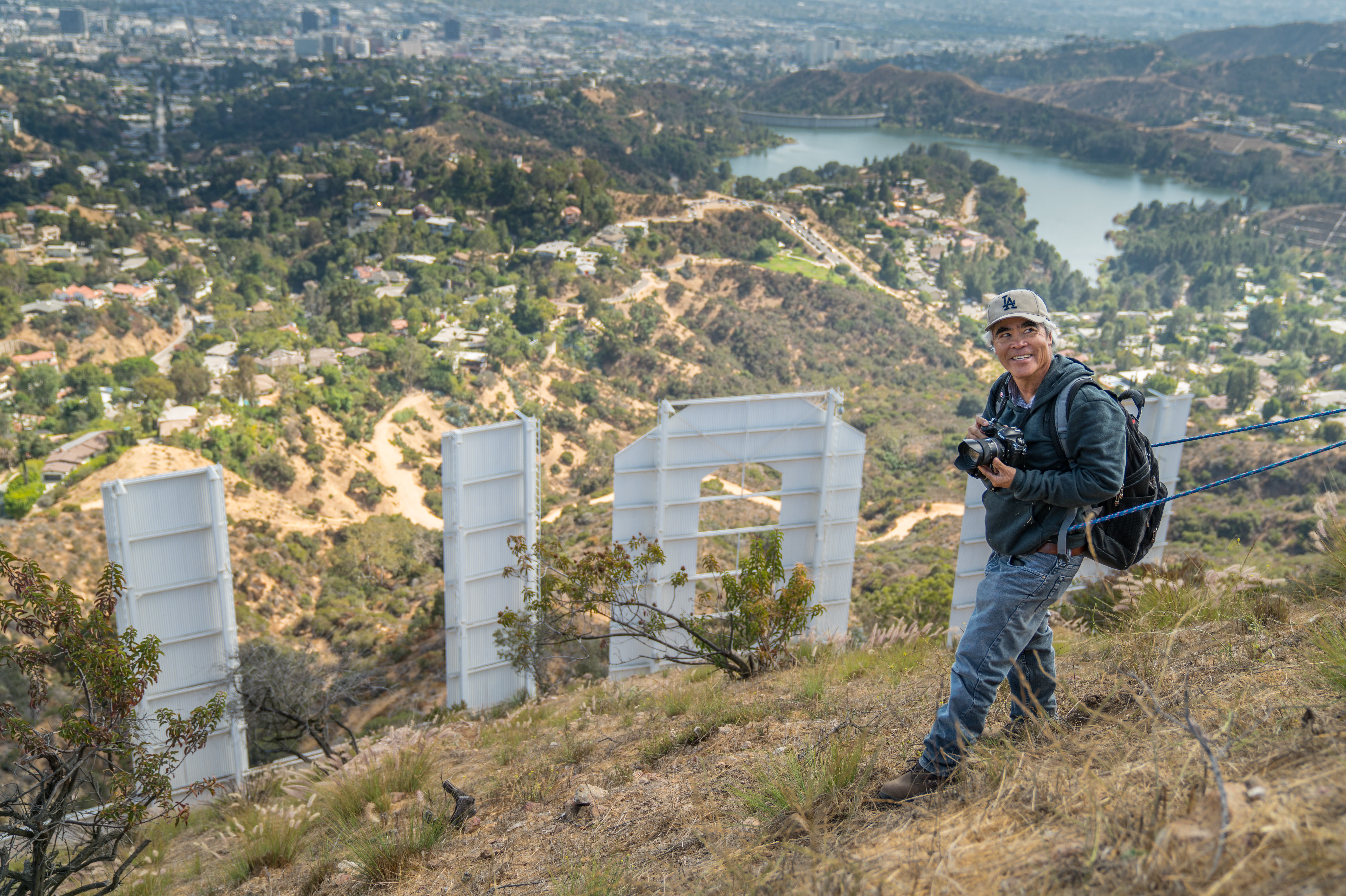
Ut retired in 2017. In an astonishing career at AP that lasted for more than 50 years. Ut took more than a million photos but he will be remembered for a single image.
Templeton attempts to rank The Terror of War in the list of the greatest photos of the 20th century. He gives honourable mentions to Raising the Flag on Iwo Jima taken by Joe Rosenthal (who also worked for AP and also won a Pulitzer Prize) and Saigon Execution, Eddie Adams’ haunting picture of Brigadier General Nguyen Ngoc Loan shooting a Viet Cong prisoner in the head.
“The Terror of War is definitely top three,” he says, “and for me it’s definitely top one, just because of all the things it says.”
Arnett agrees, summing up the lasting resonance of The Terror of War. “That photo has become more than iconic. It represents war in its worst aspect, the death and maiming of children, innocent people. I think it will continue until the end of time.”
Let’s leave the last word to Phuc. Quite understandably, she feels a deep and abiding gratitude towards Ut. “I want to say, ‘thank you, Uncle Ut. You are my hero, and I’ll never forget. I love you, Uncle Ut.”
She closes by asserting that, despite the enormous personal cost, she is very glad that single image was captured for posterity. “Every time I look at that picture, yes, it’s hard for me. I can smell the smoke, I can see the fire burning me, and I can feel my terror at that moment.
“But I’m so thankful that Uncle Ut took my picture. I never regret that picture being taken because it recorded the horror of war and the truth of what happened – that children were suffering.”
From Hell to Hollywood is on PBS America at 8.50pm on Tuesday




Join our commenting forum
Join thought-provoking conversations, follow other Independent readers and see their replies
Comments